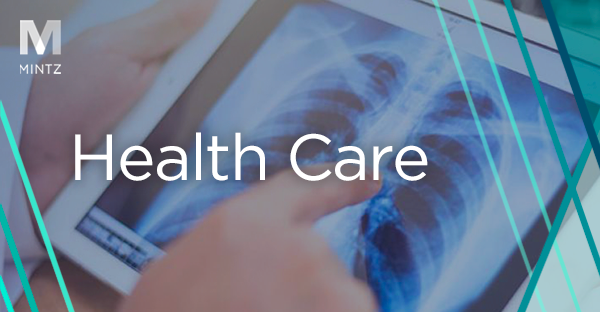OIG Issues Another Favorable Advisory Opinion on Treatment-Based Patient Incentives
The Office of Inspector General for the Department of Health and Human Services (OIG) recently issued another favorable Advisory Opinion on patient incentives (e.g. gift cards or cash equivalents) given as part of patients’ treatment plans. Though the OIG reiterated its concern that cash and cash equivalents given to patients can present substantial fraud and abuse risks, the OIG concluded that the arrangement presented a minimal level of risk.
The Proposed Arrangement
The requestor is a digital health company that uses smartphone and smart debit card technology to operate an incentive program (Program) for individuals with substance use disorders (Members). The requester does not bill Federal health care programs, but it contracts with health plans, addiction treatment providers, employee assistance programs, research institutions, and other treatment providers (Customers) to offer the Program to individuals with substance use disorders. Customers generally pay the requester monthly per Member fees.
Members enrolled in the Program receive incentives for achieving specified behavioral health goals. For example, Members might receive $2 per successful breathalyzer test or $5 for attending therapy sessions. The incentives are capped at $200 per month and $599 per year per Member. According to the requestor, the program is evidence-based, protocol-driven, and consistent with the principles for the effective treatment of substance use disorders published by the National Institute on Drug Abuse.
The OIG noted that the Program could potentially implicate the federal Anti-Kickback Statute (AKS) and the Beneficiary Inducements CMP, because the incentives paid to Members could potentially be used to incentivize Members to receive health care services (e.g. counseling sessions) that might be billed to Federal health care programs from a particular provider or supplier, including certain Customers (e.g. treatment providers). The OIG reiterated its longstanding concerns relating to the offer of incentives intended to induce patients to obtain federally reimbursable items and services, because the incentives can corrupt medical decision-making, result in overutilization, increase costs, and steer patients to particular providers or suppliers. Nevertheless, the OIG concluded that the arrangement presents a minimal level of risk of fraud and abuse for the following reasons:
- Protocol-Driven, Evidence-Based Treatment Program. The OIG noted that the patient incentives are part of an evidence-based treatment program rather than an inducement to seek, or a reward for having sought, a particular federally reimbursable treatment.
- Incentives are a Low Dollar Amount. The OIG concluded that the Program’s incentives were unlikely to encourage overutilization of federally reimbursable services, because the dollar amount of the incentives is low – typically $5 per achievement – and a substantial portion of the incentives are not associated with federally reimbursable services.
- Low Risk that a Customer Would Use the Program to Generate Business. The OIG concluded that there is a low risk that Customers would pay the Program fees to reward the requestor for referrals, because the fees do not vary based on the volume or value of any federally reimbursable services. Moreover, many of the Customers are not health care providers or suppliers and thus do not have an incentive to induce a Member to receive federally reimbursable services.
- Entity that Does Not Bill Federal Health Care Programs Determines the Incentives. While cash and cash-equivalent incentives given to patients may raise substantial fraud and abuse risks, here the requestor – an entity that does not bill Federal health care programs and does not have an incentive to induce overutilization – determines what types of services each member needs and what incentives will be attached to those services.
Previous OIG Advisory Opinions on Patient Incentives as Part of Treatment Plans
This latest OIG Advisory Opinion is one of a handful of favorable Advisory Opinions on the use of patient incentives to motivate patients to receive medically-necessary treatment and/or adhere to a treatment plan.
- In OIG Advisory Opinion 20-08, the requestor is a federally qualified health center (FQHC) that proposed to use $20 gift cards from “big-box” retailers to incentivize pediatric patients who had previously missed two or more preventive and early intervention care appointments to attend such appointments. The FQHC would contact the parents of eligible pediatric patients, notify the parents of the opportunity to receive the gift cards upon rescheduling and attending an appointment, and furnish the gift cards at checkout after the appointments. The OIG found the arrangement would present minimal risk of fraud and abuse for a few reasons. First, the risk of inappropriate patient steering is low since the pool of eligible patients is limited to patients that have already established a relationship with the FQHC. Further, the arrangement is unlikely to lead to overutilization, because the arrangement is in fact designed to address underutilization of preventive and early intervention items and services. Lastly, the OIG concluded that the value of the gift cards was reasonably modest and thus unlikely to harm competition.
- In OIG Advisory Opinion 12-21, the requestor was a FQHC providing services to Medicaid beneficiaries on a capitated basis. The FQHC proposed offering patients $20 grocery store gift cards as an incentive to visit the FQHC for a screening or clinical service. Patients were only eligible for a single $20 gift card per year. The OIG determined that the gift cards would not be an impermissible inducement under the CMP, because the patients are assigned by their plan to the FQHC so the gift card would not influence the patients to select the FQHC, the gift card is of relatively modest value, and the gift cards would not be advertised or marketed, except to patients already assigned to the FQHC.
- In OIG Advisory Opinion 08-14, the requestor was an outpatient treatment provider of services for individuals with substance abuse dependence that proposed providing gift certificates to grocery stores and gas stations as motivational incentives as part of patients’ treatment plans. Patients earned the incentives through achievement of specific goals such as attendance at planned events, active participation in counseling sessions, and provision of drug-free urine samples. The OIG issued a favorable Advisory Opinion, because the motivational incentives are integral to the clinical care provided to patients. The OIG also noted several additional factors in the program that minimize the risk of abuse: incentives never take the form of cash and are only $5-10 in value; typically the incentives do not exceed $200 per month in the aggregate or last for more than 3 months; the incentives are only introduced into patients’ treatment on the basis of a clinical determination that the incentives are clinically indicated; and the motivational incentives are not advertised or discussed with new patients. The OIG specifically noted that the opinion does not apply to incentives that exceed $200 per month or last more than 3 months.
As with all Advisory Opinions, these Advisory Opinions are limited to their facts and are binding only with respect to the requesting party. Health care entities, particularly providers or suppliers that bill Federal health care programs, should use caution before adopting similar patient incentive programs by, for example, limiting the dollar value of any incentives to relatively modest amounts; utilizing an evidence-based, protocol-driven treatment program; and refraining from advertising the incentives to the general public.


